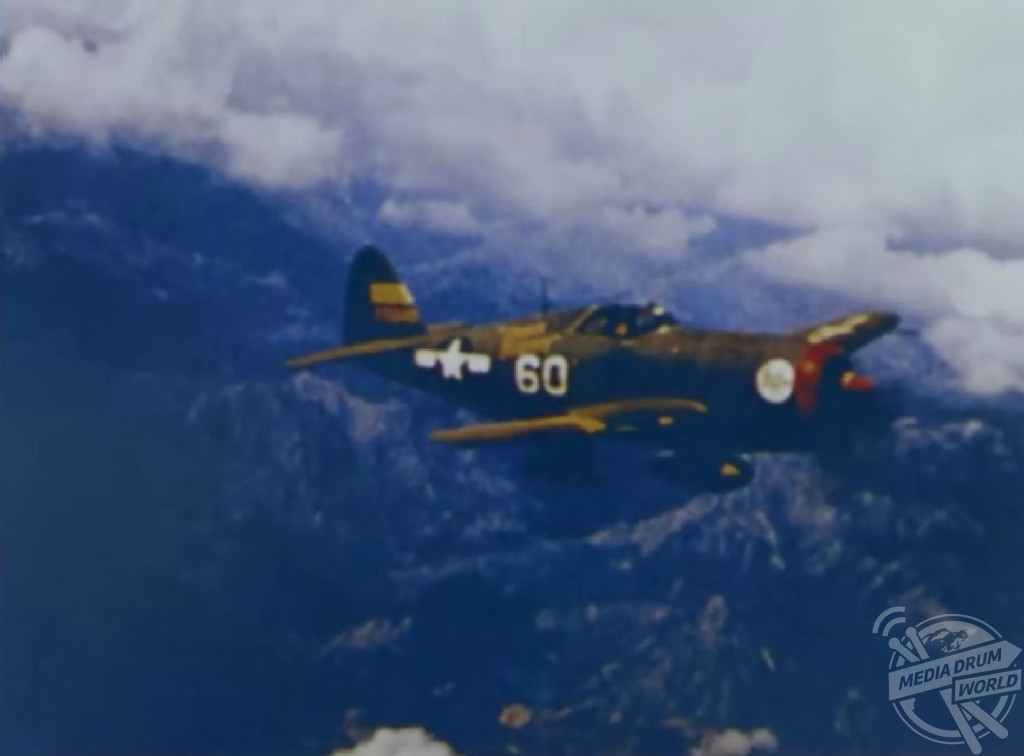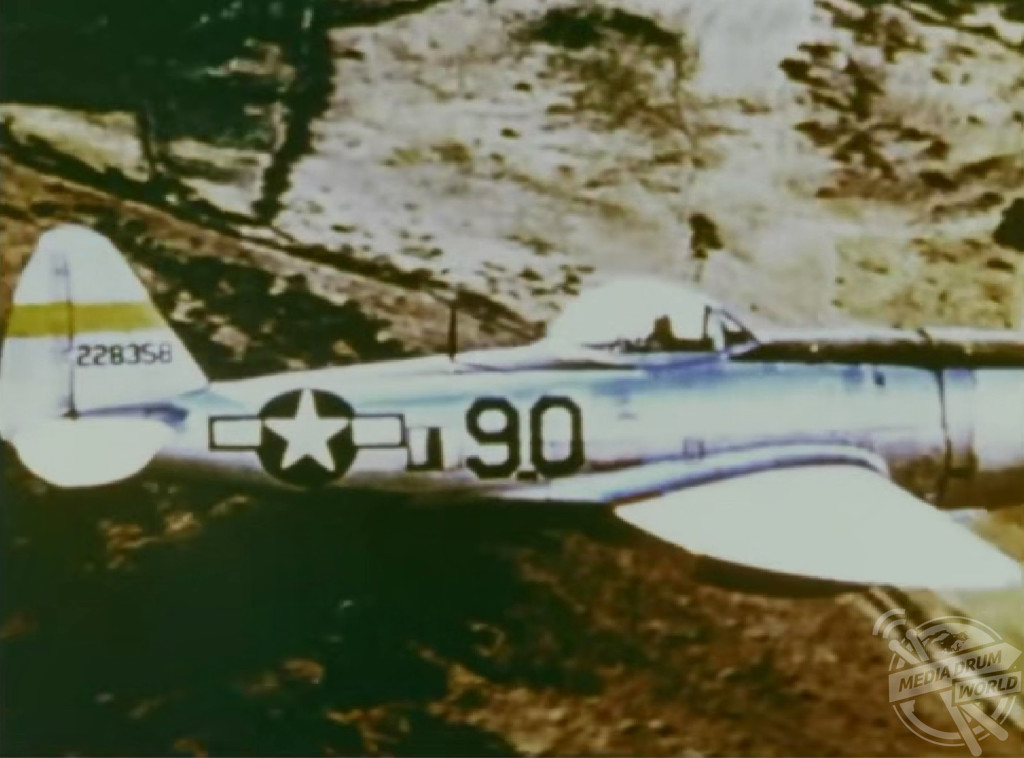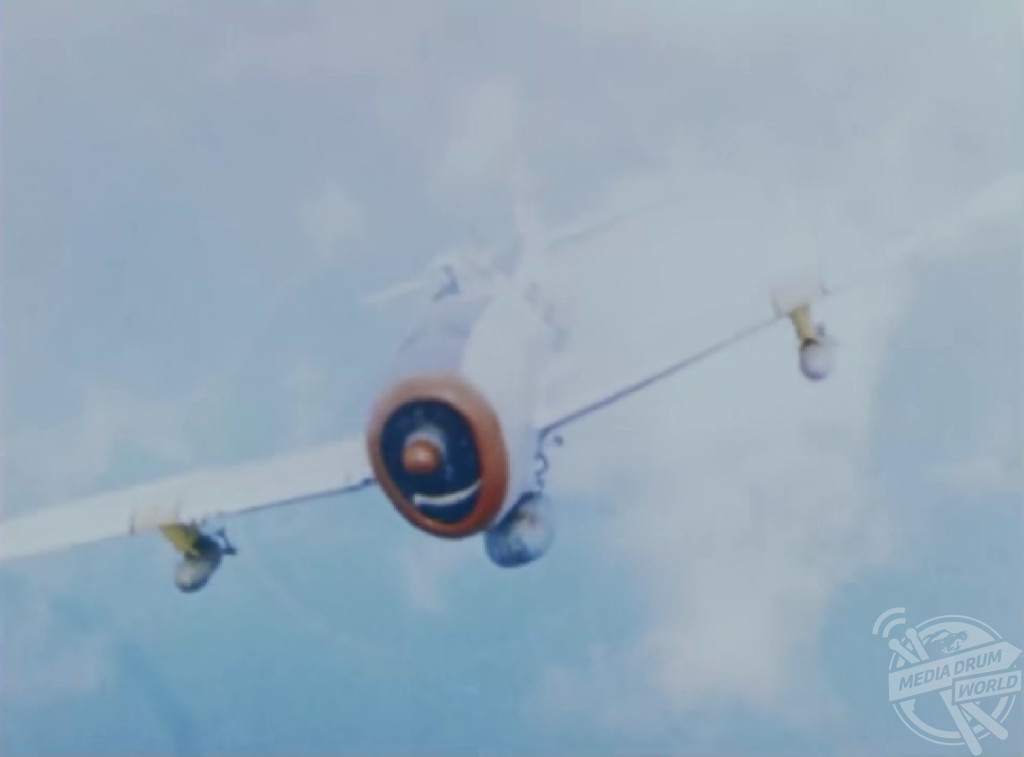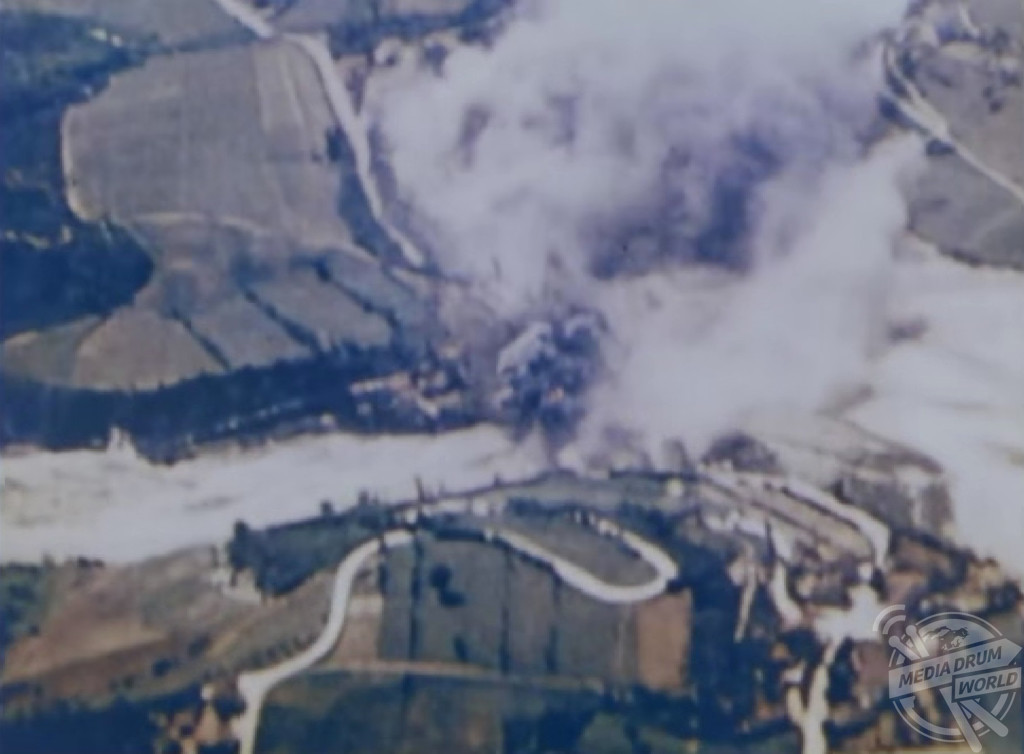By Tom Dare
INCREDIBLE COLOURISED footage from the Second World War showing allied airmen attacking various strategic points in an attack over Italy has resurfaced this week, giving a rare insight into the first-hand experience of the pilots of World War Two.
The video, taken in 1945 prior to the end of the war, follows a squadron of P-47 Thunderbolt airplanes from the U.S. Air Force as they conduct operations over Italy in the final days of Mussolini’s reign.

Footage shows the aircraft dropping bombs and opening fire on a bridge of strategic importance in the Italian countryside, before the squadron moves on to a supply train making its way toward Rome, which they immobilise before destroying its cargo completely.
Further clips from the video captures the majestic aircraft soaring through the skies high above Italy, with a final sequence showing the group opening fire on supply cars making their way along back country roads.

With the war drawing to a close and the defeat of the axis powers drawing closer by the day, the allied air forces missions over Italy were vital in forcing out the few remaining enemy combatants that remained, eliminating them before they could rearm or regroup. The allies also had the ulterior motive of breaking the spirit of the Italians and making them weary of the war, insisting that bombing was something they ‘had’ to do in order to achieve liberation, victory and freedom. This was an idea which took hold with the Italian population, the majority of whom were women at this point, with one writing in her diaries:
“They were an enemy that had to hurt us deeply, and to whom, however, we cannot bear resentment.

“On our poor defenceless body he had to strike the cancer that was devouring us, cutting the flesh just like the surgeon with the scalpel.”
Another woman remarked that they were indeed confusing times, writing in her diaries:
“On the church square, among the silent crowd, someone dared to say: ‘these are the Anglo-Americans, assassins of children’.

“Among the sincere pain, propaganda was insinuating; on the walls posters appeared with images of death to remind those who persisted in refusing to believe it, that the so-called ‘liberators’ were the enemies. Ideas were confused.”

It is not known exactly how many Italians were killed as a result of the allied bombing campaigns, but the nation lost more than 150,000 of its civilians during the war, the majority of whom were killed in the final few years.






